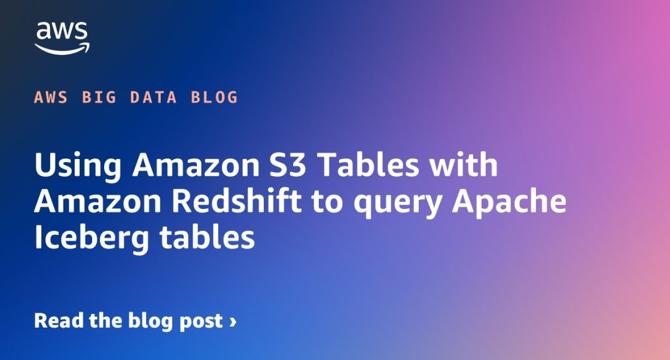Amazon
1w
79

Image Credit: Amazon
Using Amazon S3 Tables with Amazon Redshift to query Apache Iceberg tables
- Amazon Redshift now supports querying data stored using Apache Iceberg tables, making it easier to manage tabular data on Amazon S3.
- Amazon S3 Tables is the first cloud object store with built-in Iceberg support, optimizing table performance and streamlining data storage.
- Amazon SageMaker Lakehouse unifies data across S3 Tables and Redshift, enabling powerful analytics and AI/ML applications.
- To use S3 Tables with Redshift, create a table bucket, set permissions, load data with Athena, and query data using Redshift.
- Prerequisites include Amazon Redshift Serverless, Amazon S3 Tables, AWS Lake Formation, and Amazon Athena for the examples in the post.
- Steps involve creating a table bucket in S3 Tables, setting up Lake Formation, loading data with Athena, and utilizing Redshift for queries.
- You can configure Lake Formation to make Iceberg tables available in SageMaker Lakehouse for Redshift querying.
- Query Iceberg data in S3 Tables using Amazon Redshift by setting up permissions and using the Redshift Query Editor v2.
- Cleanup steps include removing resources like Redshift Serverless workgroups and SageMaker Lakehouse data.
- Overall, using Amazon Redshift with Iceberg tables in S3 Tables offers efficient data analysis and storage, with various possibilities for further optimization and control.
Read Full Article
4 Likes
For uninterrupted reading, download the app